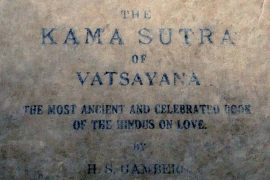It’s widely known that the spread of Buddhism from its Indian roots had significantly contributed towards enriching the culture and civilisation of countries like China, Korea and Japan. However, not many know that several Hindu gods and goddesses were also introduced into these countries alongside Buddhism.
There is no historical evidence to prove that there had been any direct or indirect contact between India and Japan before the introduction of Buddhism in AD 552. As such, the question of Hindu deities being familiar to the Japanese before that does not arise.
According to the first official history of Japan, nihonshoki, compiled in A.D. 720, king Syöng-myöng of the Korean kingdom of Kudara sent an idol of Sākyamuni and two Buddhist texts to the Japanese Emperor Kinmei in the tenth month of the thirteenth year of his reign, i.e., in A.D. 552, strongly recommending that Japan should embrace Buddhism. The Japanese welcomed the new religion with great ardour and reverence.
By the Nara period (A.D. 710-784), Buddhism grew into a dominant religion with considerable influence not only on its followers but also on Japan’s administrative affairs. After that, continuous interactions and exchanges ensued between Japan and the mainland – primarily China – through the Korean peninsula.
Copyright©Madras Courier, All Rights Reserved. You may share using our article tools. Please don't cut articles from madrascourier.com and redistribute by email, post to the web, mobile phone or social media.Please send in your feed back and comments to [email protected]











